Edo Castle, a historic stronghold of the Tokugawa Shogunate, has left behind significant remnants that continue to tell the story of Japan’s feudal past. In this article, we focus on the Otemon area, one of the key sections of the Edo Castle ruins. As the main entrance gate to Edo Castle, Otemon played a vital role in security and governance. Within its vicinity, visitors can explore remnants of guard stations, historical structures, and architectural features that reflect the castle’s former grandeur. This guide provides historical insights, highlights key attractions, and offers practical travel tips to help you follow in the footsteps of Tokugawa Ieyasu in modern Tokyo.
Otemon Area
Otemon Gate
⭐Recommendation Rating
Historical Significance: ☆☆
Visual Appeal: ☆☆☆
Experiential Value: ☆☆☆
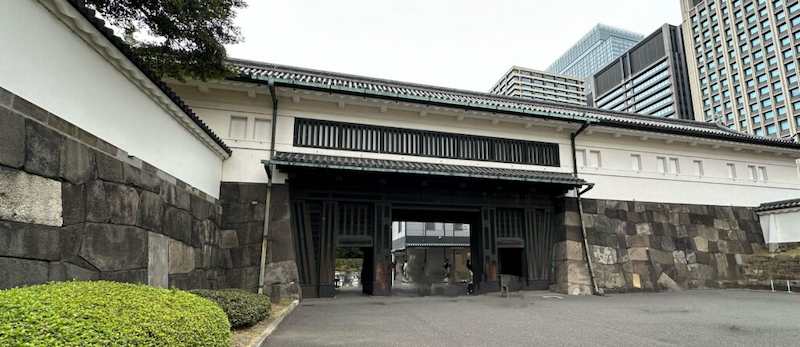
Otemon Gate, originally built in 1607 by the renowned castle architect Todo Takatora, served as the main entrance to Edo Castle. In the 1620 reconstruction under Sakai Tadatsuyo, the left and right stone walls were built by Date Masamune. The gate was heavily fortified, guarded by 30 muskets, 10 bows, and 20 long spears, ensuring strict security around the castle.
| Year Built | 1607 (Keichō 12) |
|---|---|
| Builder | Tōdō Takatora |
| Structure/Features | Masugata-style gate with Kōraimon and Watari-yagura |
| Renovation/Restoration | In 1620, Sakai Tadayoshi handled construction; Date Masamune built the stone walls |
| Current Status | Kōraimon remains; Watari-yagura rebuilt in wood in 1963 |
| Destruction/Damage | Watari-yagura destroyed in WWII air raids |
| Cultural Property Designation | Tokyo Metropolitan Tangible Cultural Property (1995) |
| Remarks | – |
🗺 Address: 1-1 Chiyoda, Chiyoda-ku, Tokyo
🚶 Access:
- 5-minute walk from Otemachi Station on the Tokyo Metro Tozai Line (approx. 0.4km)
⏳ Recommended Visit Duration:
- Quick sightseeing: ~15 minutes
- In-depth exploration: ~30 minutes
📍 Key Highlights
- Koraimon Gate: A historic structure from the Edo period, showcasing advanced architectural techniques of the time.
- Masugata Courtyard: A square-shaped defensive feature designed to slow enemy advances, allowing visitors to experience its strategic design firsthand.
- Restored Watariyagura Gate: Originally destroyed during wartime, this wooden structure was reconstructed in 1963, preserving the gate’s historical appearance.
- Stone Walls: Edo-period stone walls remain intact, offering a glimpse into past construction methods.
- Seasonal Attractions: During spring, cherry blossoms bloom around the gate, creating a picturesque scene.
📌 Trivia
- Historical Significance: Otemon served as the main entrance for shoguns, imperial messengers, and feudal lords, with stringent security measures in place.
- Connection to Famous Figures: The construction involved prominent samurai lords, including Todo Takatora and Date Masamune.
Sannomaru Shozokan
⭐Recommendation Rating
Historical Significance: ☆
Visual Appeal: ☆☆
Experiential Value: ☆☆☆
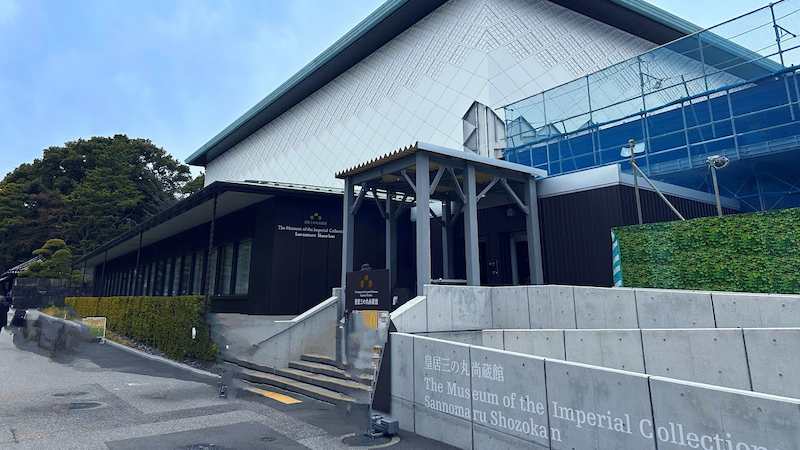
Located within the East Gardens of the Imperial Palace, the Sannomaru Shozokan is an art museum showcasing imperial treasures. Opened in 1993, it houses approximately 9,800 works, including national treasures by artists such as Ito Jakuchu and Kano Eitoku. As exhibits change periodically, there is no permanent display, ensuring a fresh experience with each visit.
| Year Built | 1993 (Heisei 5) |
|---|---|
| Builder | Imperial Household Agency |
| Structure/Features | A museum exhibiting imperial art treasures. Exhibitions change regularly; no permanent display. |
| Renovation/Restoration | New facility opened in 2023; management transferred to the National Institutes for Cultural Heritage. |
| Current Status | Still existing |
| Destruction/Damage | None |
| Cultural Property Designation | None |
| Remarks | – |
🗺 Address: 1-1 Chiyoda, Chiyoda-ku, Tokyo
💰 Admission: 1,000 yen (as of March 15, 2025; check the official link for updates)
🚶 Access:
- 1 minute walk from Otemon Gate (approx. 0.1km)
⏳ Recommended Visit Duration:
- Quick sightseeing: ~15 minutes
- In-depth exploration: ~40 minutes
📍 Key Highlights
- National Treasures: View masterpieces such as Ito Jakuchu’s Colorful Realm of Living Beings and Kano Eitoku’s Karajishi Folding Screen.
- Seasonal Exhibits: Rotating special exhibitions allow visitors to discover different works each visit.
📌 Trivia
- Historical Background: Established following the donation of imperial art collections to the nation after Emperor Showa’s passing.
- Hidden Gem: A storage area housing rarely seen artworks is occasionally accessible during special events.
- Connection to Renowned Artists: Features works by renowned Japanese artists such as Yokoyama Taikan and Takamura Koun.
Doshin Guardhouse
⭐Recommendation Rating
Historical Significance: ☆☆
Visual Appeal: ☆☆☆
Experiential Value: ☆
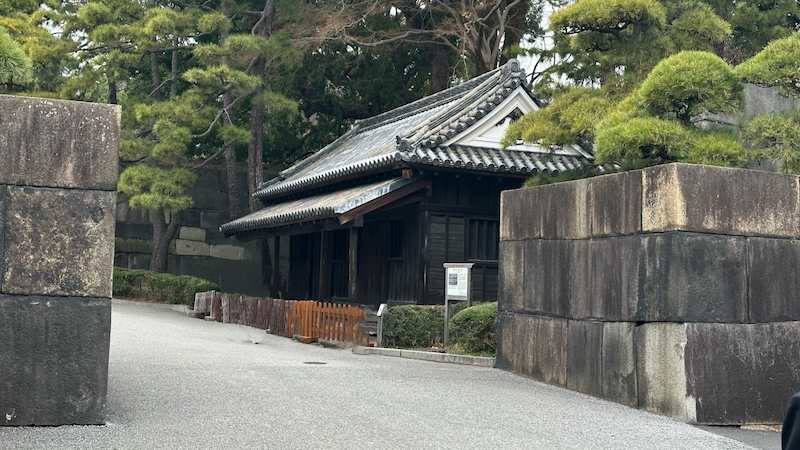
The Doshin Guardhouse is one of the three surviving Edo Castle security stations. Staffed by Doshin (low-ranking samurai), it played a crucial role in monitoring visitors heading toward the castle’s inner sanctum.
| Year Built | Late Edo period (exact year unknown) |
|---|---|
| Builder | Tokugawa Shogunate |
| Structure/Features | Single-story wooden guardhouse with Tokugawa family crest on roof tiles. |
| Renovation/Restoration | Restored in 1968 to its original Edo period form. |
| Current Status | Still existing |
| Destruction/Damage | None |
| Cultural Property Designation | None |
| Remarks | – |
🗺 Address: 1-1 Chiyoda, Chiyoda-ku, Tokyo
🚶 Access:
- 1 minute walk from Sannomaru Shozokan (approx. 0.1km)
⏳ Recommended Visit Duration:
- Quick sightseeing: ~5 minutes
- In-depth exploration: ~15 minutes
📍 Key Highlights
- Historical Building: Dating back to the late Edo period, the structure has undergone preservation efforts to maintain its authenticity.
- Aoi Crest on Roof Tiles: The Tokugawa family’s iconic Aoi crest remains visible on the roof tiles.
- Masugata Stone Walls: Nearby stone walls reflect Edo-period military architecture.
📌 Trivia
- Historical Importance: Doshin guards oversaw security at Otemon’s third gate, where non-Tokugawa daimyo were required to dismount before entering the inner castle.
- Hidden Detail: The highest roof tile bears the Tokugawa Aoi crest, while lower eaves feature the more common Mitsudomoe emblem.
Hyakunin Guardhouse
⭐Recommendation Rating
Historical Significance: ☆☆
Visual Appeal: ☆☆☆
Experiential Value: ☆
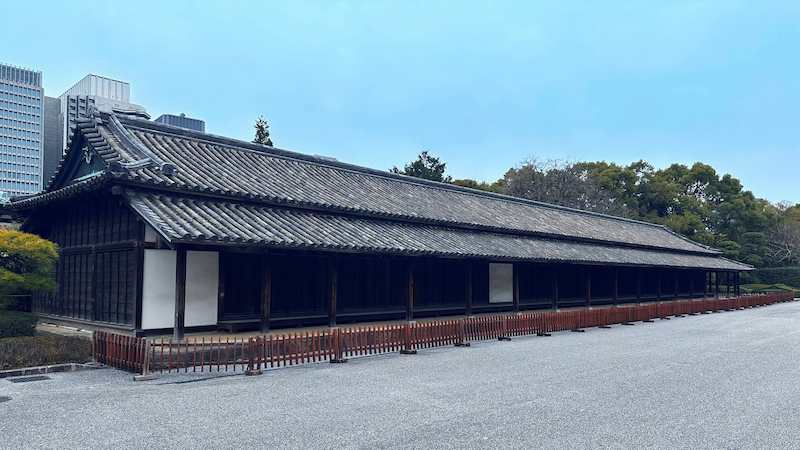
The Hyakunin Guardhouse is the largest of Edo Castle’s three surviving security posts, manned by the Hyakunin-gumi, an elite gunner squad responsible for castle defense.
| Year Built | Early Edo period (exact year unknown) |
|---|---|
| Builder | Tokugawa Shogunate |
| Structure/Features | Approx. 50 meters long; row-house style with visible Edo-era architectural techniques. |
| Renovation/Restoration | Restored in 1968 to its original Edo period form. |
| Current Status | Still existing |
| Destruction/Damage | None |
| Cultural Property Designation | None |
| Remarks | Home to elite gunmen units (Iga, Kōga, Negoro, and 25 Riders Group) tasked with protecting the castle. |
🗺 Address: 1-1 Chiyoda, Chiyoda-ku, Tokyo
🚶 Access:
- 1 minute walk from Doshinbansho (approx. 0.1km)
⏳ Recommended Visit Duration:
- Quick sightseeing: ~5 minutes
- In-depth exploration: ~15 minutes
📍 Key Highlights
- Edo-Period Architecture: The longhouse structure, spanning approximately 50 meters, retains original Edo-era construction techniques.
- Defensive Layout: The interconnected rooms illustrate the scale of security operations during the shogunate.
- Preserved Stone Walls: Surrounding fortifications highlight Edo Castle’s sophisticated defense system.
📌 Trivia
- Historical Role: The Hyakunin-gumi gunners stationed here played a critical role in Edo Castle’s security.
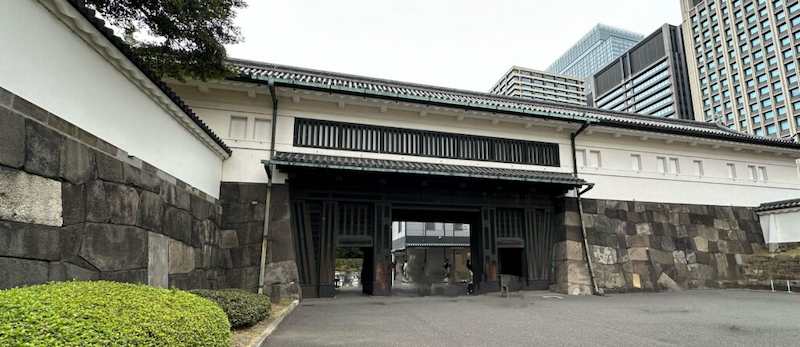


comment